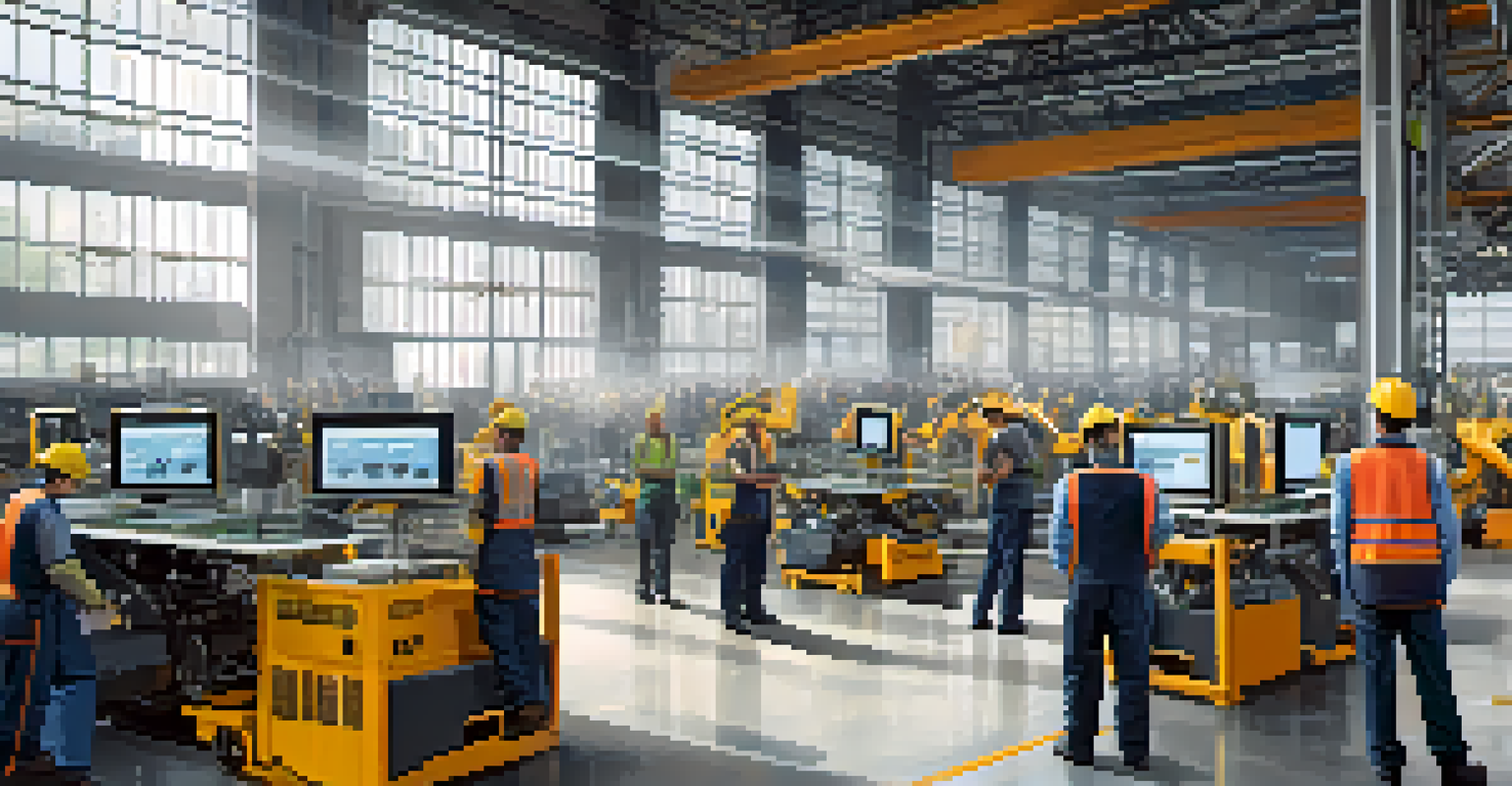The Global Landscape of Edge Computing Adoption

Understanding Edge Computing: A Brief Overview
Edge computing refers to processing data closer to its source rather than relying on a centralized data center. This approach reduces latency and enhances speed, making it particularly beneficial for applications requiring real-time data processing. For example, think of how a smart thermostat adjusts the temperature in your home; it needs to analyze data instantly to be effective.
Edge computing is a game-changer for organizations looking to harness the power of real-time data processing.
By moving computation to the 'edge' of the network, businesses can optimize their operations and improve user experience. This shift is crucial in industries like healthcare, where timely data access can be a matter of life and death. Overall, edge computing allows for a more efficient use of bandwidth and resources, which is vital in today's data-driven world.
As we explore the global landscape of edge computing adoption, it's important to recognize how this technology is reshaping various sectors, often acting as a catalyst for innovation. The increasing reliance on IoT devices is also pushing more organizations to consider edge solutions to meet their growing data needs.
The Rise of Edge Computing Across Industries
Edge computing isn't confined to one sector; its adoption spans various industries, including healthcare, manufacturing, and retail. For instance, in healthcare, remote monitoring devices collect patient data at the edge, enabling real-time analysis that can lead to quicker interventions. This immediacy is transforming patient care and operational efficiency.

In manufacturing, edge computing facilitates predictive maintenance by processing sensor data from machines right on the factory floor. This proactive approach minimizes downtime and reduces costs, proving that the benefits of edge computing are tangible and impactful. Retailers are also leveraging edge technology to enhance customer experiences through personalized services and streamlined inventory management.
Edge Computing Enhances Speed
By processing data closer to its source, edge computing significantly reduces latency and improves response times for real-time applications.
As we witness this widespread adoption, it's clear that edge computing is not just a trend; it's becoming integral to operational strategies across multiple sectors. Companies are recognizing that staying competitive means embracing these innovations to meet evolving consumer demands and operational challenges.
Key Benefits Driving Edge Computing Adoption
One of the most compelling benefits of edge computing is reduced latency. By processing data closer to its source, businesses can deliver faster responses and improve user experiences. This is especially important in applications like autonomous vehicles, where split-second decisions depend on real-time data analysis.
The future of technology is not just in the cloud but at the edge, where data is created and consumed.
Another advantage is enhanced security. With data processed locally, sensitive information can be kept closer to its source, reducing the risk of exposure during data transmission. This aspect is crucial for industries that handle confidential information, such as finance and healthcare.
Additionally, edge computing can lead to significant cost savings by decreasing bandwidth usage and minimizing the need for extensive data transfer to centralized servers. By optimizing resource allocation, businesses can achieve greater efficiency and invest more in innovation and growth.
Challenges Faced in Edge Computing Implementation
Despite its advantages, adopting edge computing comes with its own set of challenges. One major hurdle is the complexity of managing distributed systems, which can be more difficult than traditional centralized models. Organizations must ensure seamless integration of edge devices with existing infrastructure, which often requires a skilled workforce.
Security remains a critical concern as well. While edge computing can enhance local security, it also introduces new vulnerabilities. Each edge device represents a potential entry point for cyber threats, necessitating robust security measures to protect data and systems.
Security Challenges Persist
While edge computing can enhance local security, it also introduces new vulnerabilities that require robust measures to protect against cyber threats.
Moreover, the lack of standardization across edge computing solutions can pose difficulties for businesses looking to implement these technologies. As companies navigate this evolving landscape, they must stay informed about best practices and emerging standards to ensure successful adoption.
Global Trends in Edge Computing Adoption
Around the world, edge computing is gaining momentum, with regions like North America and Asia leading the charge. In North America, the proliferation of IoT devices and the demand for faster data processing drive significant investments in edge solutions. Meanwhile, countries in Asia are rapidly adopting these technologies to enhance smart city initiatives and support their digital economies.
Emerging markets are also beginning to explore edge computing as a means to leapfrog traditional infrastructure limitations. For instance, mobile network operators in Africa are leveraging edge solutions to improve connectivity and deliver essential services to remote areas. This trend highlights how edge computing can bridge the digital divide in various regions.
As companies globally recognize the strategic importance of edge computing, we can expect to see increased collaboration between tech providers and enterprises. This collaboration will foster innovation and lead to the development of more effective edge solutions tailored to specific industry needs.
The Future of Edge Computing: What Lies Ahead
Looking ahead, the future of edge computing appears promising, with projections indicating continued growth and innovation. As 5G technology rolls out globally, it will enhance the capabilities of edge computing by providing faster and more reliable connectivity. This synergy will open doors to new applications, particularly in areas like augmented reality and smart transportation.
Moreover, advancements in artificial intelligence (AI) will play a crucial role in the evolution of edge computing. AI algorithms can process data on-site, enabling smarter decision-making and automation in real time. This integration will empower businesses to optimize their operations and improve customer experiences significantly.
Global Adoption is Accelerating
Regions like North America and Asia are leading the way in edge computing adoption, driven by the demand for faster data processing and smart city initiatives.
Ultimately, the future landscape of edge computing will be shaped by collaboration, standardization, and technological advancements. As organizations continue to embrace this transformative technology, we can anticipate a more interconnected and efficient world.
Conclusion: Embracing the Edge Computing Revolution
In conclusion, the global landscape of edge computing adoption is evolving rapidly, driven by the need for speed, efficiency, and security. As industries recognize the numerous benefits of edge solutions, they are increasingly integrating these technologies into their operations. This shift not only enhances performance but also fosters innovation and competitiveness.
However, businesses must remain vigilant about the challenges that accompany edge computing implementation, from complexity to security concerns. By addressing these issues head-on, organizations can unlock the full potential of edge computing and reap its rewards.

As we move forward, embracing the edge computing revolution will be essential for businesses aiming to thrive in a data-driven world. The future is on the edge, and those who adapt will lead the way into a new era of technological advancement.